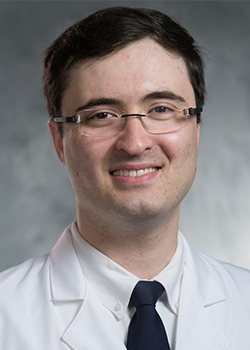
After decades of decline, heart failure mortality is climbing, with a dramatic rise in heart failure deaths among younger adults.
The number of people dying from heart failure in the United States went down steadily from 1999 to 2009. However, progress made in treating heart failure began unraveling from 2009 to 2012 when heart failure-related mortality rates plateaued, according to a study led by Duke University School of Medicine.
From 2012 onwards, heart failure mortality rates have been increasing.
Marat Fudim, MD, an associate professor in the Duke Department of Medicine and lead author of the study published April 24 in JAMA Cardiology, points to widespread obesity and rising rates of diabetes and hypertension putting more people at risk for heart failure. Yet, the high cost of new heart medicines and difficulty accessing health care may be hindering effective heart failure treatment.

“The gains made from 1999 to 2012 have been entirely undone by reversals from 2012 to 2021, meaning that contemporary heart failure mortality rates are higher than in 1999,” said Fudim, who treats patients with heart failure at Duke Health.
A surge in heart failure deaths in 2020 and 2021 masks a longer-term trend as “the origins of the reversals preceded the COVID-19 pandemic,” Fudim said. “Disruptions in health care caused by COVID-19 added fuel to a smoldering fire and heart failure mortality rates accelerated dramatically.”
Researchers developed the cohort analysis from the Centers for Disease Control and Prevention Wide-Ranging Online Data for Epidemiological Research.
The CDC data is based on information from death certificates and study authors acknowledge that relying on death records has limitations. Death certificates might not always accurately identify the cause of death, especially when symptoms of heart failure are similar to those of other conditions like COVID-19.
Still, the government data revealed reversals in the decline of heart failure mortality as improving trends started to worsen.
In 2012, the heart failure-related mortality rate of about 82 deaths per 100,000 people started going up, reaching 106 per 100,000 by 2021. This spike hasn’t been seen since 1999 when the heart failure-related mortality rate stood at 105 per 100,000 people.
Reversals affected various groups differently. According to the study’s results, the greatest increases in mortality were seen in adults under age 45 (906.3%), adults aged 45-64 (384.7%), men (119%), African-Americans (166%), and rural residents (92%). Parts of the U.S. with the largest jumps in heart failure were the South (118%) and Midwest (115%).
Although heart failure is typically linked to old age and damage to the heart over time, the study suggests young adults are encountering heart failure.
It’s a trend that Fudim and other experts in cardiovascular medicine believe could be connected to the repercussions of childhood obesity catching up to millennials and Gen Z.
Combating Heart Disease
While there's no cure for heart failure, medications can ease common symptoms of fatigue, shortness of breath, and swelling.
To help the heart pump more efficiently, doctors may prescribe patients a combination of medicines from four main classes of drugs that include beta blockers and sodium-glucose cotransporter-2 inhibitors. However, patients may struggle to access newer therapies due to substantial co-pays or inadequate prescriptions from physicians.
For severe cases of heart failure, heart valve surgery or implantable cardioverter defibrillators might be necessary.
Addressing the resurgence in heart failure deaths doesn’t solely depend on treatment, Fudim said.
Curbing heart failure mortality includes educating the public about heart disease prevention, diagnosing heart failure earlier, and offering remote care to the millions of rural Americans who live hours away from a hospital or heart doctor.
“By focusing on these areas, we could enable better management to help people live longer and with a better quality of life,” Fudim said.
Additional authors include Ahmed Sayed, MBBS; Dimitry Abramov, MD; Gregg C. Fonarow, MD; Mamas A. Mamas, MD, PhD; Ofer Kobo, MD; and Javed Butler, MD, MPH.